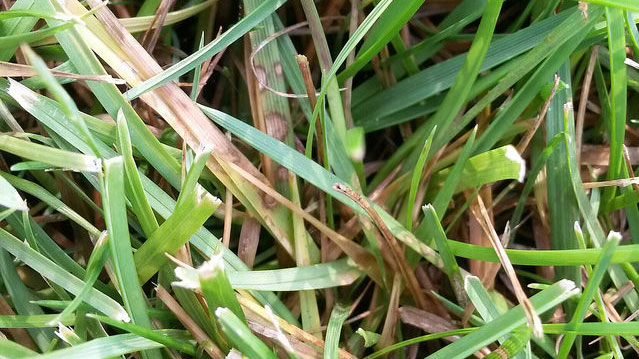What Brands of Tall Fescue Are the Most Resistant to Brown Patch?
go.ncsu.edu/readext?465446
en Español / em Português
El inglés es el idioma de control de esta página. En la medida en que haya algún conflicto entre la traducción al inglés y la traducción, el inglés prevalece.
Al hacer clic en el enlace de traducción se activa un servicio de traducción gratuito para convertir la página al español. Al igual que con cualquier traducción por Internet, la conversión no es sensible al contexto y puede que no traduzca el texto en su significado original. NC State Extension no garantiza la exactitud del texto traducido. Por favor, tenga en cuenta que algunas aplicaciones y/o servicios pueden no funcionar como se espera cuando se traducen.
Português
Inglês é o idioma de controle desta página. Na medida que haja algum conflito entre o texto original em Inglês e a tradução, o Inglês prevalece.
Ao clicar no link de tradução, um serviço gratuito de tradução será ativado para converter a página para o Português. Como em qualquer tradução pela internet, a conversão não é sensivel ao contexto e pode não ocorrer a tradução para o significado orginal. O serviço de Extensão da Carolina do Norte (NC State Extension) não garante a exatidão do texto traduzido. Por favor, observe que algumas funções ou serviços podem não funcionar como esperado após a tradução.
English
English is the controlling language of this page. To the extent there is any conflict between the English text and the translation, English controls.
Clicking on the translation link activates a free translation service to convert the page to Spanish. As with any Internet translation, the conversion is not context-sensitive and may not translate the text to its original meaning. NC State Extension does not guarantee the accuracy of the translated text. Please note that some applications and/or services may not function as expected when translated.
Collapse ▲Reader Question:
“Have you or anyone ever done any testing to see what brands of tall fescue are the most resistant to brown patch and other fungi diseases? My grass always looks great and I do everything I can to avoid it but it still likes to come back every summer. When I reseed this fall I want to apply a very resistant type of seed.”
Our Answer
This is a common question that unfortunately there is no easy answer to. Tall fescue as a species is susceptible to brown patch, and as a result all of the varieties within that species are susceptible with a minimal range of differences among varieties. Some of this is due to the fact that what we accept, and even expect, as desirable tall fescue lends itself to increased disease pressure. Dark color, fine leaf texture, and a dense canopy all look great (and its what people want to see), but these characteristics result in turfgrasses that retain heat and moisture due to their dark color and high density (which results in less wind movement throughout the turf canopy). This is one reason why we consistently see Kentucky 31 outperform many of the turf-type cultivars regarding brown patch incidence. Unfortunately, its coarse texture, light color, and open canopy make it undesirable in most turfgrass settings.
We do indeed collect measurements of brown patch incidence on all of our tall fescue variety trials, and present the data accordingly. Although there are significant differences among varieties, it is not safe to say that any of these varieties are “resistant”. Its just that they exhibit less brown patch incidence when ratings are collected. As an example, we are currently hosting a National Turfgrass Evaluation Program (NTEP) Trial that has 113 varieties of tall fescue. Summer data on brown patch is collected and compiled in the Cool-Season Variety Recommendation List as varieties that exhibit “excellent” performance with regard to brown patch and overall quality. This is certainly valuable data to incorporate into your selection, but much of your brown patch prevention comes down to management with regards to proper fertilization, irrigation, mowing, etc. With that being said, I have also attached the Tall Fescue Lawn Maintenance Calendar as well. If and when brown patch does become apparent there are several available fungicides that are very effective in treating it, both on a curative and preventive basis.
So, sorry there is no silver bullet for this issue. I PROMISE that EVERY turfgrass breeder I know of is working on this issue, because they realize they are sitting on a gold mine if they develop a tall fescue variety that is truly “resistant” to brown patch. Maybe one day right??



